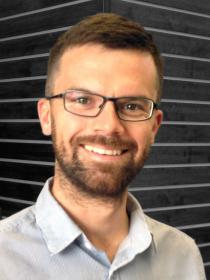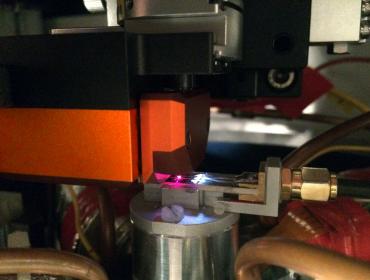
The unique combination of compact design, optical access, and intuitive operation of the LensAFM made it the perfect platform for our instrument development. We believe that much of the success of our project has been achieved through the excellent communication that we have enjoyed between ourselves, Nanosurf, their UK distributor Windsor Scientific, and AFM probe manufacturer Nanosensors. We now look forward to future developments with the LensAFM to optically probe magnetic materials deep into the nanoscale.
In the Magnetic Materials group led by Professor Rob Hicken (Department of Physics and Astronomy, University of Exeter, UK), we use time-resolved magneto-optical microscopy to explore magnetic processes in nanoscale devices on picosecond timescales. The temporal resolution is achieved using ultrafast laser pulses, but the diffraction limited spot size of the focused laser beam determines the spatial resolution. As a unique solution to this problem, we have equipped our microscope with the Nanosurf LensAFM to develop a platform for scanning near-field magneto-optical microscopy. The unique combination of compact design, optical access, and intuitive operation of the LensAFM made it the perfect platform for our instrument development. Nanosurf's convenient and reproducible locking mechanism with standard objective lens fitting was readily used to mount the LensAFM in our system, while the LensAFM's integrated objective lens was used to focus ultrafast optical pulses from a Ti:Sapphire laser onto the rear of the cantilever and tip.
The scientists and engineers at Nanosurf are very approachable and were willing to design and implement a number of bespoke components that were necessary for the success of our instrument development. Through excellent communication with Nanosurf — including an invitation to visit to their site in Switzerland — we were able to quickly understand how commercially available probes that were well-suited to our application, but not specifically intended for use in the LensAFM, could be modified for their use. Not only did this result in successful AFM operation using such probes, but we were then able to go on to acquire our first time-resolved magneto-optical images of magnetization dynamics on sub-micron length scales using the optical near-field generated at the AFM tip. A key feature of the LensAFM for our application is the use of the alignment chip, which allows us to rapidly change between AFM probes and our home-modified 'near-field' probes with high reproducibility of tip-sample positioning.
First results using the LensAFM for time-resolved scanning Kerr-microsocopy in the near-field have been published in arXiv


